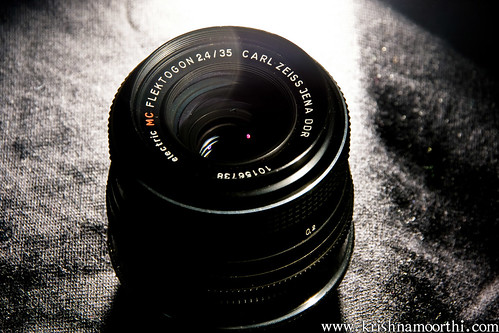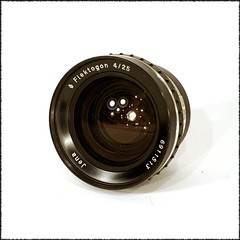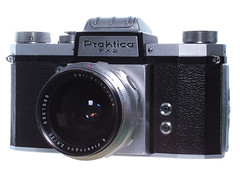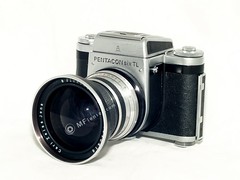Difference between revisions of "Flektogon"
(question over priority with Angénieux) |
(→Links: substituting non-problem pic photographer added to CW pool) |
||
| Line 32: | Line 32: | ||
==Links== | ==Links== | ||
| − | + | ||
{{Flickr image | {{Flickr image | ||
| − | | image_source=http://www.flickr.com/photos/mflenses/ | + | | image_source=http://www.flickr.com/photos/mflenses/4046187448/in/pool-camerawiki |
| − | | image=http://farm3.static.flickr.com/ | + | | image=http://farm3.static.flickr.com/2602/4046187448_13cdf6e510_m.jpg |
| image_align=right | | image_align=right | ||
| − | | image_text=Pentacon Six with | + | | image_text=Pentacon Six with Flektogon |
|image_by= mflenses | |image_by= mflenses | ||
|image_rights=wp | |image_rights=wp | ||
Revision as of 20:16, 21 October 2011

|
| 2.4/35, for electric variant of the M42 screw mount as used on the Praktica PLC 2/PLC 3 image by Kishor Krishnamoorthi (Image rights) |

|
| Flektogon 4/25 image by stammi (Image rights) |

|
| image by Michele M. F. (Image rights) |
The Flektogon was an early wide angle lens of its type with a short focal length yet a long back focus distance (although the cine retrofocus design of Angénieux preceded it). It was introduced in 1950 by VEB Carl Zeiss Jena, the East German Zeiss optics plant. The first variant was the Flektogon 2.8/35 for 35mm SLRs. Later other 35mm variants were made: 4/25, the remarkable fast 2.4/35 and the first super-wide angle lens 4/20. Medium format variants were made for the Pentacon Six: 2.8/65 and 4/50.
Other lens makers like Carl Zeiss Oberkochen (West Germany) made similar leses like the Distagon. It's a rare case of an eastern product copied in the West. Production of the manual-focusing Flektogon ended in 1991 whilst the Distagons are still in the market. A new variant by Carl Zeiss is the autofocus Flektogon 1:3,5/35mm for the Rolleiflex 6008 AF.
Links

|
| Pentacon Six with Flektogon image by mflenses (Image rights) |
- Flektogon in German Wikipedia